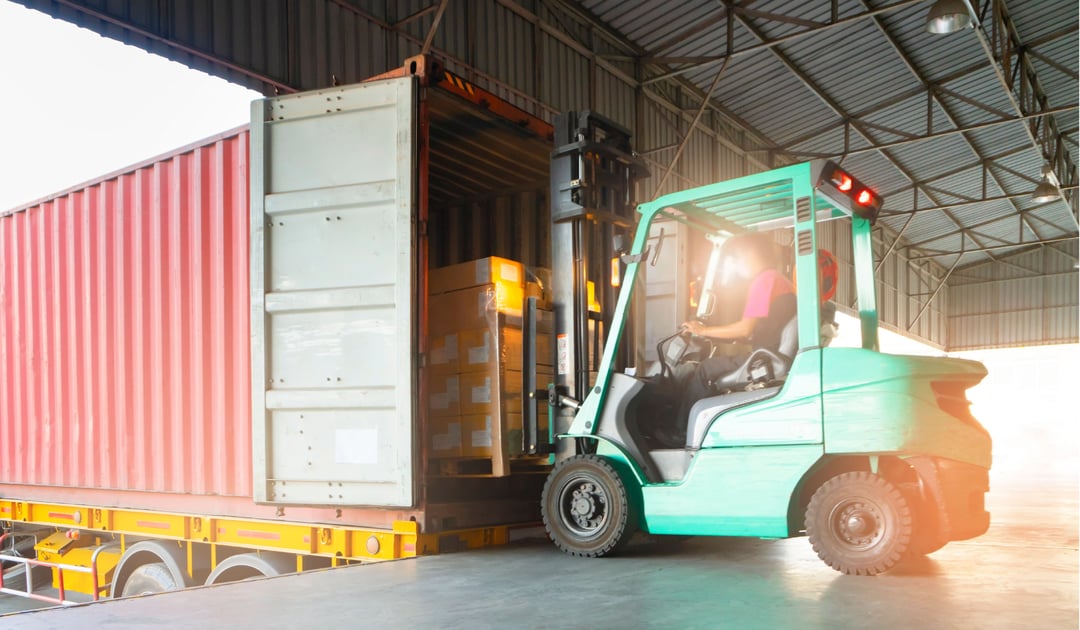
Blocking and bracing are necessary steps to take to prevent damage to a load during shipping. Blocking refers to packing in such a way to prevent a load from moving side to side or forward and backward within a container or trailer. Bracing is done to prevent a load from moving up and down. These are - of course - related. If a load isn't properly blocked, braces won't hold. And without the right bracing, a load can jump over its blocks. In essence a failure of one or the other becomes a failure of both, leading to shifting and most likely damage. Since getting a load from point A to point B without damage is kind of a big deal, so too is proper blocking and bracing.
Blocking and bracing is a process that gets easier with practice. There are multiple ways to tackle how to block and brace loads within a container or trailer, including
All these options may sound confusing and complicated, but again, once you get comfortable - or you work with someone who is - it becomes second nature. Shippers are often especially hesitant about the block and brace process when it comes to intermodal, partially because vibrations along the rails make it even more important and partially because it's their responsibility. In fact though, intermodal shippers often find the option of having a good stretch-wrapping procedure for their pallets and using a couple of 2x4s and 16d penny nails - or even staggering the load differently in the container - is all it takes.
The responsible party for blocking and bracing depends on the shipping method. When it comes to over the road (OTR)/truckload, the driver (and by proxy the carrier) is generally responsible for ensuring a load is properly packed before leaving the shipper. This is partly because a load typically stays with that driver through its whole journey. On the other hand, as intermodal involves sealed containers moving between different modes, the intermodal shipper takes full responsibility for blocking and bracing the load before the container is sealed to protect their product. With intermodal transportation, shippers expressly warrant that their loads are properly blocked and braced in accordance with the American Association of Railroads (AAR) Terms and Conditions.
Blocking and bracing is certainly important no matter the shipping method, but intermodal trumps truckload in terms of how necessary doing it just right is. The added factor in intermodal versus truckload - which are both generally smooth shipping methods - is a gentle vibration present throughout a journey via railroad that can lead to additional shifting possibilities. It's a slow, steady vibration that causes pallets in an intermodal load to float at one speed and can cause load movement within a container. The pallets stacked with product can not only move on the decking of the container, but the pallet stack has the potential to fall apart if the product is not tightly wrapped or banded to its pallet. Accounting for this vibration is the 'X factor' of blocking and bracing intermodal versus truckload, and those who don't account for it are more likely to suffer damage to their loads.
And if that damage occurs - or the container goes out of balance - the damage claim will not be paid without proper bracing present. Plus, on intermodal loads that shift in such a way to cause the load to become illegal, the shipper is responsible for the costs and delays with reworking the freight, which can include: scaling costs, possible fines, additional freight charges, labor costs to rework the load and more. The other big difference again, is that the shipper is responsible for blocking and bracing in intermodal, whereas the driver/carrier takes responsibility on over the road shipments.
If you're ready to take the next step, at InTek Freight & Logistics, we can help. Just tell us what you need and we'll discuss how our expertise can help with the unique shipping challenges your business faces. Rather do a bit more research first? View our Freight Guides for comprehensive articles and eBooks on all things freight and logistics.

